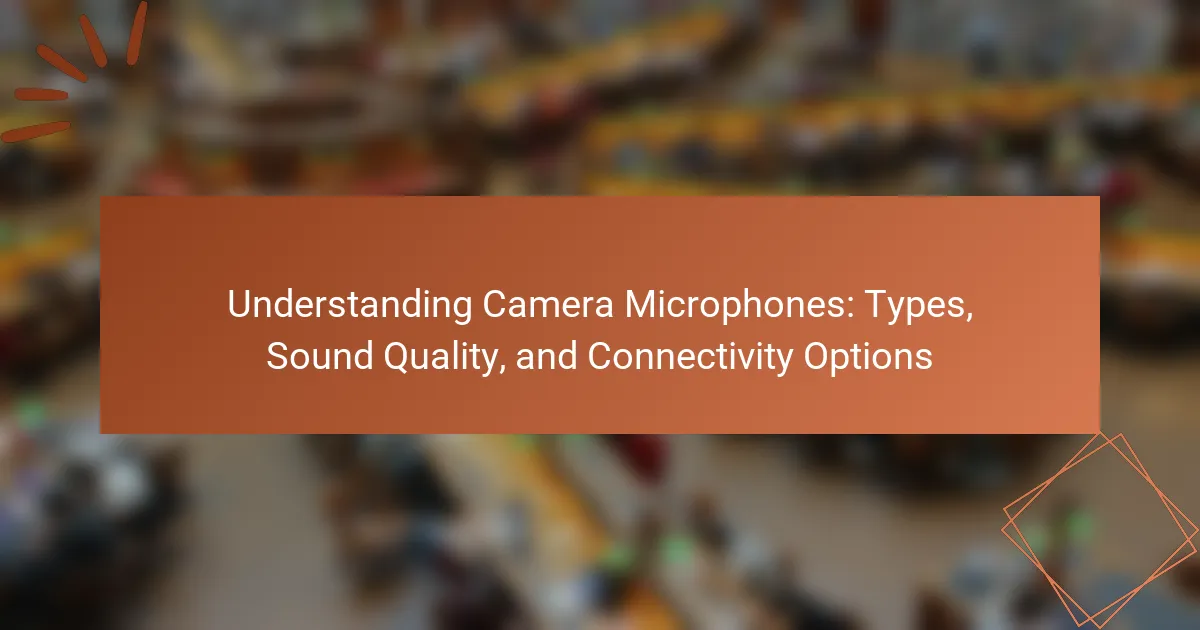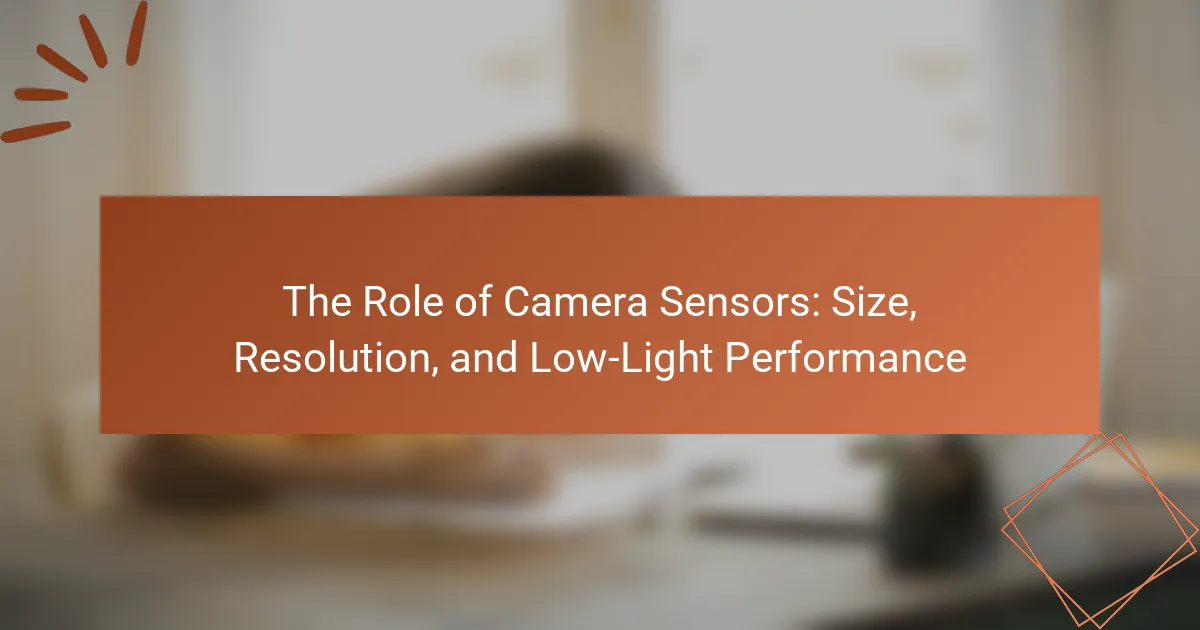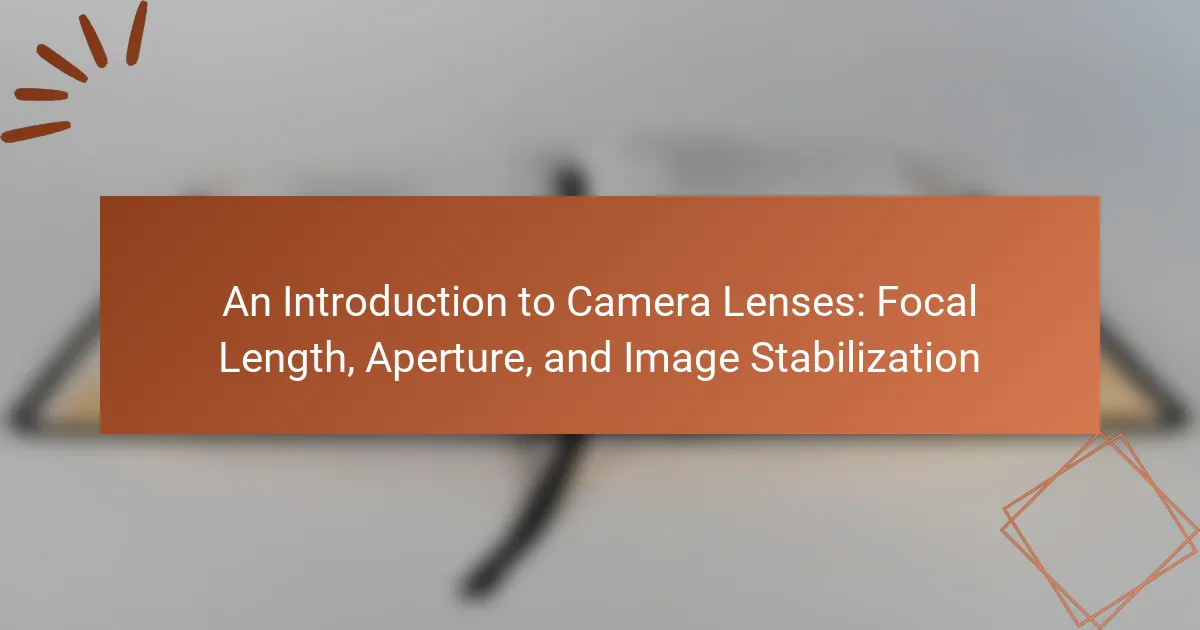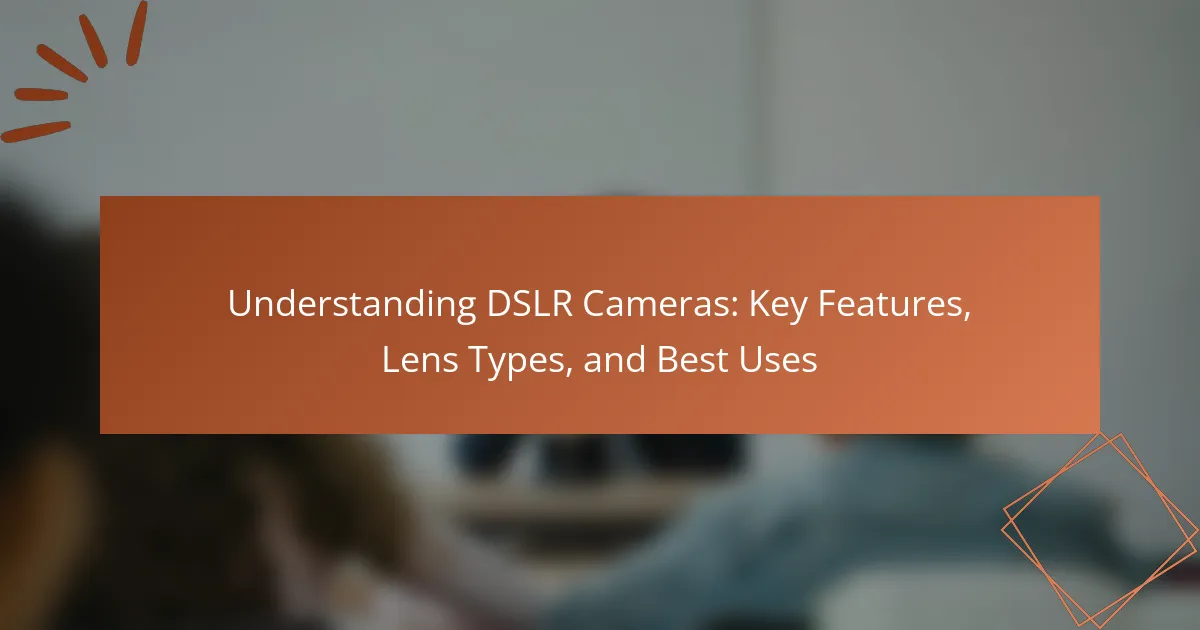The article focuses on the impact of camera settings—ISO, shutter speed, and aperture—on exposure in photography. ISO measures the camera’s sensitivity to light, with higher values enhancing performance in low-light conditions but potentially increasing noise. Shutter speed determines the duration the sensor is exposed to light, influencing motion capture and overall exposure. Aperture controls the size of the lens opening, affecting light intake and depth of field. Understanding these three components is essential for achieving balanced exposure and desired artistic effects in images.
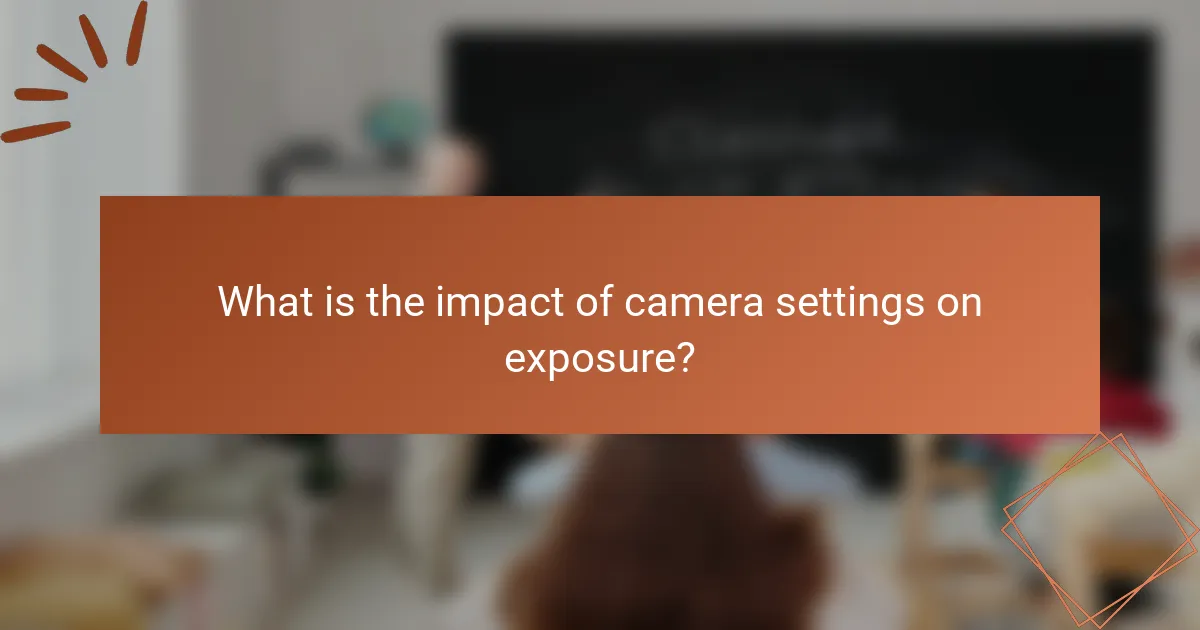
What is the impact of camera settings on exposure?
Camera settings significantly impact exposure. Exposure is determined by three main settings: ISO, shutter speed, and aperture. ISO controls the camera’s sensitivity to light. A higher ISO increases sensitivity but may introduce noise. Shutter speed regulates the duration the sensor is exposed to light. A faster shutter speed reduces light intake, while a slower speed allows more light. Aperture affects the size of the lens opening. A wider aperture (lower f-stop number) lets in more light, while a narrower aperture (higher f-stop number) lets in less. Together, these settings create a balanced exposure, essential for capturing well-lit images.
How do ISO, shutter speed, and aperture interact to affect exposure?
ISO, shutter speed, and aperture interact to determine the exposure of an image. ISO measures the camera’s sensitivity to light. A higher ISO allows for better performance in low light but can introduce noise. Shutter speed controls how long the camera’s sensor is exposed to light. Faster shutter speeds reduce motion blur but allow less light in. Aperture refers to the size of the lens opening. A wider aperture lets in more light and creates a shallow depth of field. Balancing these three settings is crucial. For example, increasing ISO can compensate for a faster shutter speed, while a wider aperture can allow for a shorter exposure time. This interplay ensures proper exposure under varying lighting conditions.
What role does ISO play in determining exposure levels?
ISO is a key factor in determining exposure levels in photography. It measures the sensitivity of the camera’s sensor to light. A higher ISO value increases sensitivity, allowing for better performance in low-light conditions. Conversely, a lower ISO value decreases sensitivity, which can lead to clearer images in bright light. ISO settings directly influence the overall exposure alongside shutter speed and aperture. For example, ISO 100 is ideal for sunny environments, while ISO 1600 is suitable for dimly lit scenes. This relationship is crucial for achieving the desired exposure in various lighting situations.
How does shutter speed influence the amount of light captured?
Shutter speed directly influences the amount of light captured by controlling the duration the camera’s sensor is exposed to light. A faster shutter speed allows less light to hit the sensor, resulting in a darker image. Conversely, a slower shutter speed increases light exposure, leading to a brighter image. For example, a shutter speed of 1/1000 second captures less light than 1/30 second. This relationship is critical in photography, as it affects exposure and motion blur. Properly adjusting shutter speed helps achieve the desired brightness and clarity in photographs.
What is the significance of aperture in controlling exposure?
Aperture is significant in controlling exposure as it regulates the amount of light entering the camera. A wider aperture (lower f-number) allows more light, resulting in brighter images. Conversely, a narrower aperture (higher f-number) permits less light, leading to darker images. This control over light affects not just exposure, but also depth of field. A wider aperture creates a shallow depth of field, blurring the background. This effect is often desired in portrait photography. In contrast, a narrower aperture increases depth of field, keeping more of the scene in focus, which is useful in landscape photography. The ability to adjust aperture is essential for achieving the desired exposure and artistic effect in photographs.
Why is understanding exposure important for photographers?
Understanding exposure is crucial for photographers because it directly affects image quality. Exposure determines how light or dark an image appears. It involves three main components: ISO, shutter speed, and aperture. Mastering these settings allows photographers to capture the intended mood and detail in their images. For example, a well-exposed photo retains details in both highlights and shadows. Conversely, poor exposure can result in loss of detail, either through overexposure or underexposure. Photographers who understand exposure can adapt to various lighting conditions effectively. This knowledge enhances their creative control over the final image.
How does exposure affect image quality and aesthetics?
Exposure directly influences image quality and aesthetics by determining the brightness and detail captured in a photograph. Proper exposure ensures that highlights and shadows are well-balanced. Underexposure leads to loss of detail in dark areas, while overexposure can wash out highlights. Both extremes can detract from the overall visual appeal. Additionally, exposure affects color accuracy and contrast. A correctly exposed image typically exhibits vibrant colors and clear details. Research indicates that optimal exposure settings enhance the viewer’s emotional response to an image, making it more engaging. Thus, managing exposure is crucial for achieving high-quality, aesthetically pleasing photographs.
What common exposure problems do photographers face?
Photographers commonly face exposure problems such as underexposure, overexposure, and incorrect white balance. Underexposure occurs when insufficient light reaches the camera sensor, resulting in dark images. Overexposure happens when too much light hits the sensor, leading to washed-out highlights. Incorrect white balance can cause colors to appear unnatural, affecting the overall image quality. These issues often arise from improper camera settings, including ISO, shutter speed, and aperture. For instance, using a high ISO in bright conditions can lead to overexposure. Conversely, a slow shutter speed in low light may result in underexposure. Understanding these common problems helps photographers adjust their settings for better exposure outcomes.
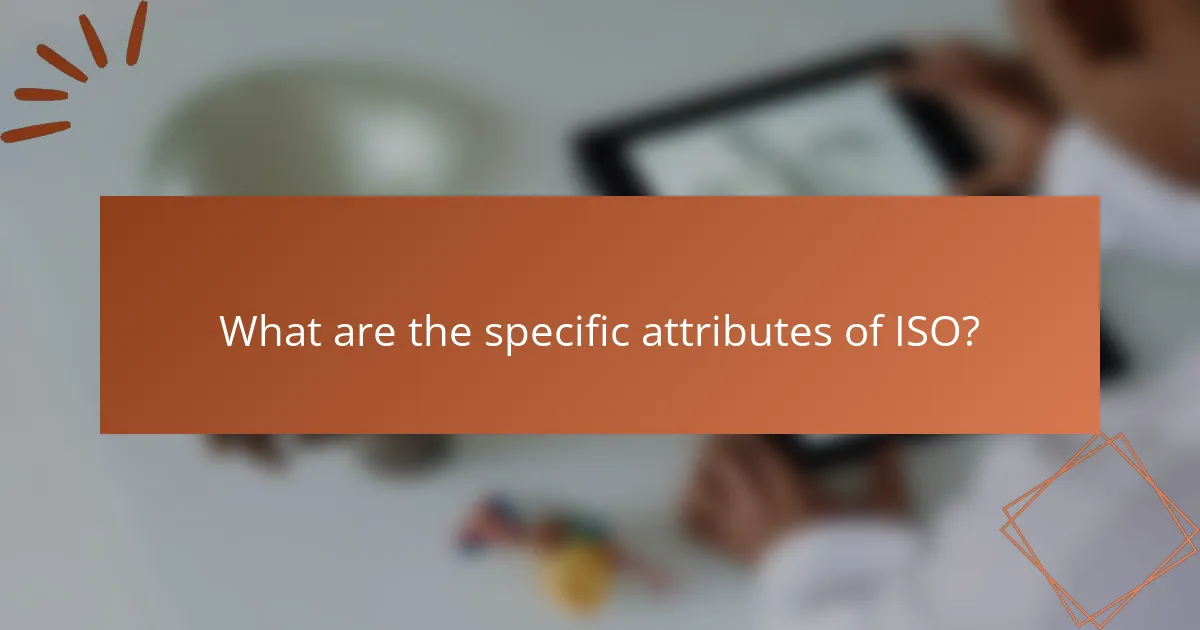
What are the specific attributes of ISO?
ISO is a measure of a camera’s sensitivity to light. It is expressed as a numerical value, typically starting from 100 and increasing in powers of two. Higher ISO values allow for better performance in low-light conditions. Conversely, lower ISO values are ideal for bright environments. ISO settings affect the graininess or noise in images. A higher ISO can introduce more noise, reducing image quality. ISO is one of the three key components of exposure, along with shutter speed and aperture. Adjusting ISO can help achieve the desired exposure in various lighting scenarios.
How does ISO sensitivity affect image noise?
ISO sensitivity directly affects image noise in photography. Higher ISO settings increase the sensor’s sensitivity to light, resulting in brighter images in low-light conditions. However, this increased sensitivity also amplifies the noise present in the image. Noise appears as grainy or speckled patterns, particularly in shadow areas.
Research indicates that noise levels can double with each full stop increase in ISO. For instance, moving from ISO 100 to ISO 200 can significantly elevate noise levels. Conversely, lower ISO settings produce cleaner images with less noise.
In summary, higher ISO sensitivity enhances light capture but also increases image noise, impacting overall image quality.
What are the implications of using high vs. low ISO settings?
High ISO settings increase sensitivity to light, allowing for better performance in low-light conditions. However, they also introduce more noise, which can negatively affect image quality. In contrast, low ISO settings reduce noise but require more light for proper exposure. This can lead to longer exposure times or the need for wider apertures. High ISO is beneficial for fast-moving subjects or dim environments, while low ISO is ideal for bright conditions and capturing fine details. Studies show that images taken at high ISO can exhibit graininess, while those at low ISO maintain clarity and color accuracy.
How can photographers choose the right ISO for different lighting conditions?
Photographers can choose the right ISO for different lighting conditions by assessing the available light. In bright conditions, a lower ISO, such as 100 or 200, is ideal to maintain image quality. In moderate light, an ISO of 400 or 800 can be effective. In low light situations, higher ISOs like 1600 or above may be necessary to capture sufficient detail.
Increasing ISO allows for faster shutter speeds, reducing motion blur in low light. However, higher ISO settings can introduce noise, which affects image quality. Photographers should balance ISO with aperture and shutter speed to achieve optimal exposure.
Using a light meter can help determine the appropriate ISO setting based on current lighting conditions. Understanding the relationship between ISO, aperture, and shutter speed is crucial for achieving the desired exposure.
What are the benefits of adjusting ISO in photography?
Adjusting ISO in photography enhances image quality and exposure control. A higher ISO setting allows for better performance in low-light conditions. This enables photographers to capture images without using a flash. It also allows for faster shutter speeds, reducing motion blur in dynamic scenes. Conversely, a lower ISO setting produces less noise, resulting in clearer images. This is particularly beneficial in bright environments. Photographers can fine-tune their ISO settings to achieve desired artistic effects. For example, a medium ISO can balance noise and sensitivity effectively.
How does ISO adjustment enhance creative control?
ISO adjustment enhances creative control by allowing photographers to manipulate the sensitivity of the camera sensor to light. This flexibility enables the capture of images in various lighting conditions without altering other settings. Increasing ISO allows for faster shutter speeds, which can freeze motion in low light scenarios. Conversely, lowering ISO reduces noise in images, resulting in clearer, more detailed photos. Photographers can achieve desired artistic effects, such as shallow depth of field or long exposure, by adjusting ISO in conjunction with aperture and shutter speed. The ability to choose ISO settings empowers photographers to express creativity while maintaining image quality.
What are the best practices for managing ISO settings?
To manage ISO settings effectively, start by understanding the relationship between ISO, shutter speed, and aperture. Keep ISO as low as possible to reduce noise in images. Increase ISO only in low-light conditions where a faster shutter speed is needed. Use manual mode to have full control over ISO settings. Regularly check the histogram to ensure proper exposure without clipping highlights or shadows. Experiment with different ISO levels to find the best quality for your camera model. Research shows that most cameras perform optimally at lower ISO settings, providing clearer images.
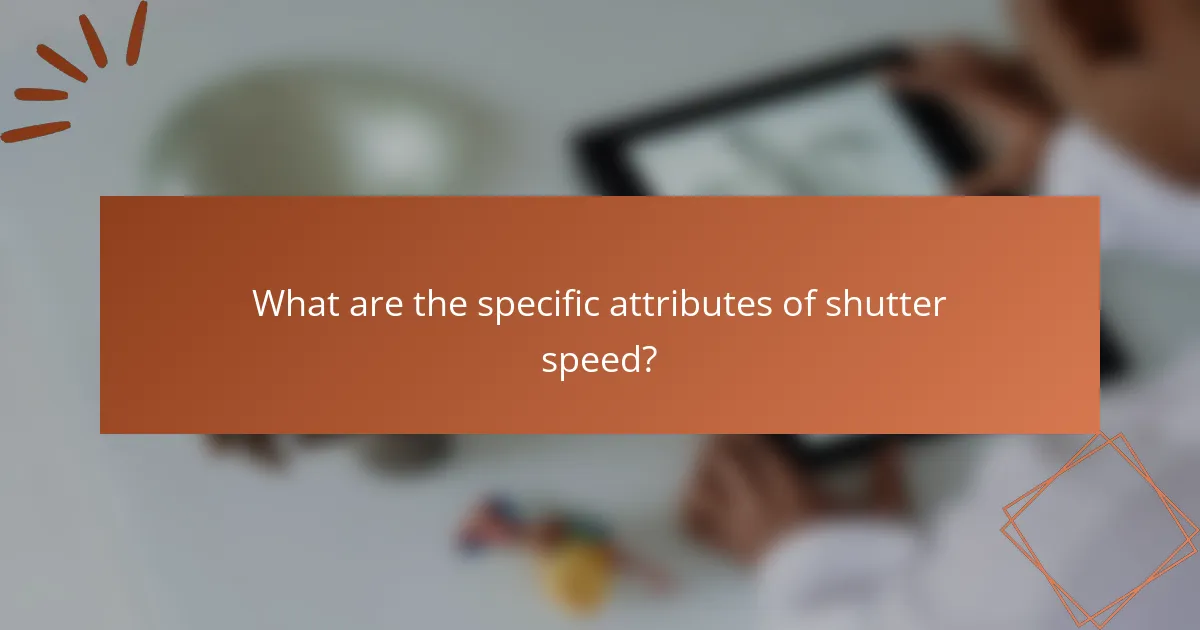
What are the specific attributes of shutter speed?
Shutter speed is the duration for which the camera’s shutter remains open during exposure. It is measured in seconds or fractions of a second. Common shutter speeds include 1/1000, 1/500, and 1/60 seconds. Faster shutter speeds freeze motion, capturing sharp images of fast-moving subjects. Slower shutter speeds allow more light, creating motion blur for artistic effects. Shutter speed influences exposure, affecting how light interacts with the sensor. It works in conjunction with ISO and aperture to determine the overall exposure of an image. For example, a shutter speed of 1/1000 second allows less light than 1/30 second.
How does shutter speed affect motion blur in photography?
Shutter speed directly affects motion blur in photography. A fast shutter speed freezes motion, capturing sharp images. For example, a shutter speed of 1/1000th of a second can freeze a moving subject. Conversely, a slow shutter speed introduces motion blur. A shutter speed of 1/30th of a second can blur moving objects, conveying a sense of movement. The longer the shutter is open, the more pronounced the blur becomes. This principle is fundamental in capturing dynamic scenes. Photographers often adjust shutter speed to achieve desired effects in their images.
What shutter speed settings are ideal for freezing action?
Shutter speed settings of 1/500 second or faster are ideal for freezing action. This speed effectively captures fast-moving subjects without blur. For even quicker movements, such as sports, settings of 1/1000 second or faster are recommended. High-speed photography often uses shutter speeds of 1/2000 second or faster. These settings ensure that the camera’s sensor captures the subject in a precise moment. A faster shutter speed reduces motion blur and enhances clarity in dynamic scenes. Therefore, using these shutter speed settings is crucial for achieving sharp images of action.
How can slow shutter speeds create artistic effects?
Slow shutter speeds can create artistic effects by capturing motion blur and enhancing light trails. This technique allows photographers to convey movement and dynamism in a still image. For instance, moving subjects, like flowing water or cars, appear blurred, emphasizing their speed. Additionally, slow shutter speeds can create ethereal effects, such as softening waves or clouds. This artistic approach can evoke emotions and add a dreamlike quality to photographs. Using a shutter speed of 1 second or longer often yields these results. The final image can reveal patterns and textures that are not visible at faster shutter speeds.
What factors should be considered when setting shutter speed?
Shutter speed is influenced by various factors that affect exposure and motion capture. The amount of light entering the camera is a primary factor. Faster shutter speeds allow less light, while slower speeds permit more light. The subject’s motion is also crucial. Fast-moving subjects require quicker shutter speeds to avoid blur. Conversely, slower speeds can create motion blur for artistic effects. The camera’s ISO setting impacts sensitivity to light. Higher ISO allows for faster shutter speeds in low light. Finally, the aperture setting affects depth of field and light entry. A wider aperture may require faster shutter speeds to prevent overexposure.
How does lighting affect the choice of shutter speed?
Lighting directly influences the choice of shutter speed in photography. In brighter lighting conditions, a faster shutter speed is often used to prevent overexposure. This allows for capturing motion without blur. Conversely, in low-light situations, a slower shutter speed is necessary to allow more light to reach the sensor. However, this can lead to motion blur if the subject moves. The relationship between lighting and shutter speed is crucial for achieving proper exposure. Photographers adjust shutter speed based on the available light to maintain image clarity and detail.
What techniques can help achieve the desired shutter speed?
To achieve the desired shutter speed, photographers can utilize several techniques. Adjusting the aperture is one method; a wider aperture allows more light, enabling faster shutter speeds. Changing the ISO setting can also help; increasing the ISO sensitivity allows for quicker shutter speeds in low light. Using stabilization techniques, such as a tripod, can minimize motion blur and allow for longer exposures without camera shake. Additionally, using neutral density filters reduces light entering the lens, allowing for slower shutter speeds in bright conditions. Lastly, employing burst shooting can capture multiple frames at varying shutter speeds, providing options for selection. These techniques are widely recognized in photography for managing exposure effectively.
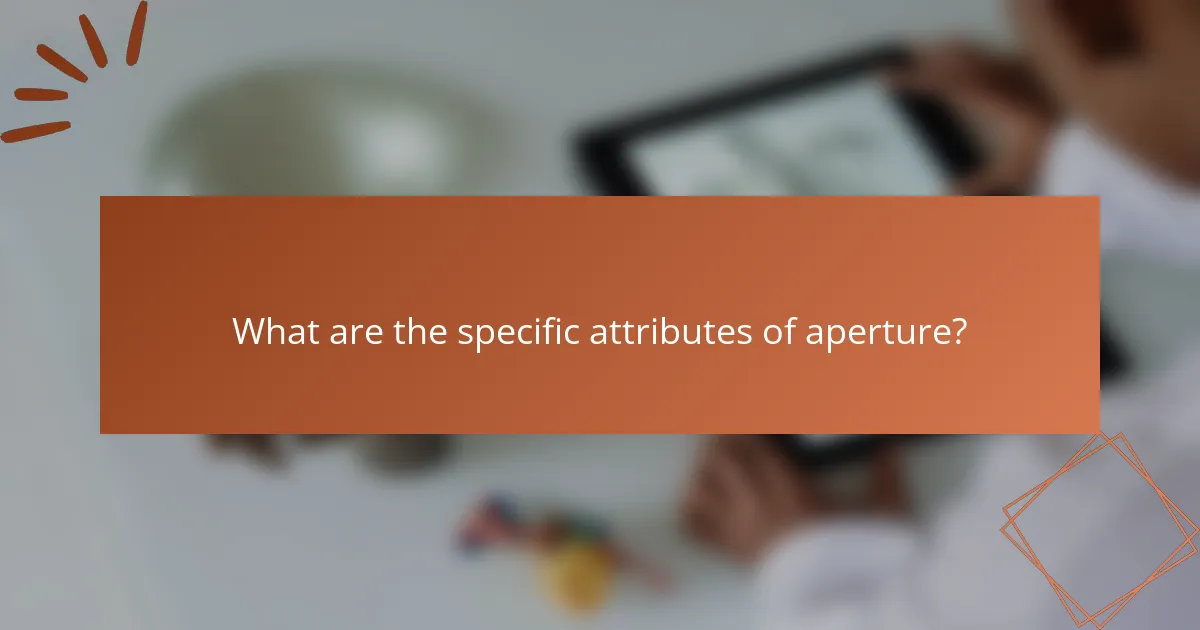
What are the specific attributes of aperture?
Aperture is a fundamental camera setting that controls the amount of light entering the lens. Its primary attributes include f-stop value, depth of field, and exposure. The f-stop value indicates the size of the aperture opening. A lower f-stop number means a larger opening, allowing more light. Conversely, a higher f-stop number results in a smaller opening and less light.
Depth of field refers to the range of distance that appears sharp in an image. A wide aperture (low f-stop) creates a shallow depth of field, isolating the subject from the background. A narrow aperture (high f-stop) increases depth of field, keeping more of the scene in focus.
Exposure is affected by aperture as it directly influences the brightness of an image. A larger aperture increases exposure, while a smaller aperture decreases it. These attributes are essential for photographers to achieve desired artistic effects and proper exposure in their images.
How does aperture control depth of field in images?
Aperture controls depth of field by adjusting the size of the lens opening. A larger aperture (smaller f-number) creates a shallow depth of field. This results in a blurred background while keeping the subject in focus. Conversely, a smaller aperture (larger f-number) increases depth of field. This keeps more of the scene in focus, from foreground to background. The relationship between aperture and depth of field is crucial in photography. It allows photographers to isolate subjects or capture detailed landscapes.
What is the relationship between aperture size and background blur?
Aperture size directly affects background blur in photography. A larger aperture (smaller f-number) creates a shallower depth of field. This results in more pronounced background blur. Conversely, a smaller aperture (larger f-number) increases depth of field. This leads to less background blur. The relationship is critical for achieving desired aesthetic effects in images. Research shows that a wider aperture can isolate subjects from their backgrounds effectively. This technique enhances focus on the subject while softening distracting elements behind it.
How does aperture influence light exposure and sharpness?
Aperture directly influences light exposure and sharpness in photography. A larger aperture (lower f-stop number) allows more light to enter the camera. This results in brighter images, especially in low-light conditions. Conversely, a smaller aperture (higher f-stop number) reduces light intake, leading to darker images.
Aperture also affects depth of field, which impacts sharpness. A larger aperture creates a shallow depth of field, isolating the subject and blurring the background. This can enhance the perceived sharpness of the subject. A smaller aperture increases depth of field, keeping more of the scene in focus, which can also enhance overall sharpness.
Research shows that aperture is crucial for achieving desired exposure and sharpness in images. The relationship between aperture, exposure, and sharpness is well-documented in photography literature.
What are the creative uses of aperture in photography?
Aperture in photography controls the amount of light entering the camera. It also affects depth of field, which is the range of distance in a photo that appears sharp. A wide aperture (small f-number) creates a shallow depth of field. This technique isolates subjects by blurring the background. Conversely, a narrow aperture (large f-number) increases depth of field. This is useful for landscapes, where foreground and background need focus.
Aperture can also influence exposure. A wider aperture allows for faster shutter speeds, reducing motion blur. Photographers often use aperture creatively to achieve specific effects, such as bokeh. Bokeh refers to the aesthetic quality of the blur in out-of-focus areas.
Different apertures can enhance the mood of an image. For example, a wide aperture can create a dreamy effect, while a narrow aperture may lend a more detailed, crisp look. Understanding these creative uses allows photographers to express their vision more effectively.
How can photographers use aperture to achieve specific visual effects?
Photographers can use aperture to achieve specific visual effects by adjusting the size of the lens opening. A wider aperture, indicated by a lower f-number, creates a shallow depth of field. This effect blurs the background and isolates the subject, enhancing focus. Conversely, a narrower aperture, indicated by a higher f-number, increases depth of field. This allows more of the scene to be in focus, ideal for landscape photography. Additionally, aperture impacts exposure; wider apertures let in more light, while narrower apertures reduce light intake. This relationship is crucial for achieving desired brightness in images.
What tips can help in selecting the right aperture for different scenarios?
To select the right aperture for different scenarios, consider the depth of field required. A wide aperture (small f-number) creates a shallow depth of field, ideal for portraits to blur backgrounds. Conversely, a narrow aperture (large f-number) increases depth of field, suitable for landscapes where sharpness throughout is desired.
Evaluate lighting conditions as well. In low light, a wider aperture allows more light, aiding exposure. In bright conditions, a narrower aperture prevents overexposure.
Assess motion as well. For fast-moving subjects, a wider aperture can help maintain faster shutter speeds.
Understand the creative effect desired. A wide aperture can create bokeh, enhancing aesthetic appeal.
These guidelines are based on photography principles widely accepted in the field.
What are some practical tips for mastering exposure settings?
To master exposure settings, practice adjusting ISO, shutter speed, and aperture. Start with the exposure triangle to understand their interdependence. Lower ISO reduces noise but requires more light. A faster shutter speed freezes motion but may underexpose images. Use a wide aperture for shallow depth of field and increased light intake. Experiment with manual mode to gain full control over settings. Review histograms to assess exposure accuracy. Take test shots in various lighting conditions to refine your skills. These practices enhance your ability to achieve desired exposure outcomes in photography.
The main entity of the article is the impact of camera settings—specifically ISO, shutter speed, and aperture—on exposure in photography. The article explains how these three settings interact to determine the exposure level of an image, detailing their individual roles and effects on light sensitivity, motion capture, and depth of field. It highlights the importance of understanding exposure for achieving optimal image quality and aesthetics, as well as addressing common exposure problems photographers may encounter. Additionally, the article provides practical tips for managing ISO, shutter speed, and aperture to enhance creative control and achieve desired photographic outcomes.
